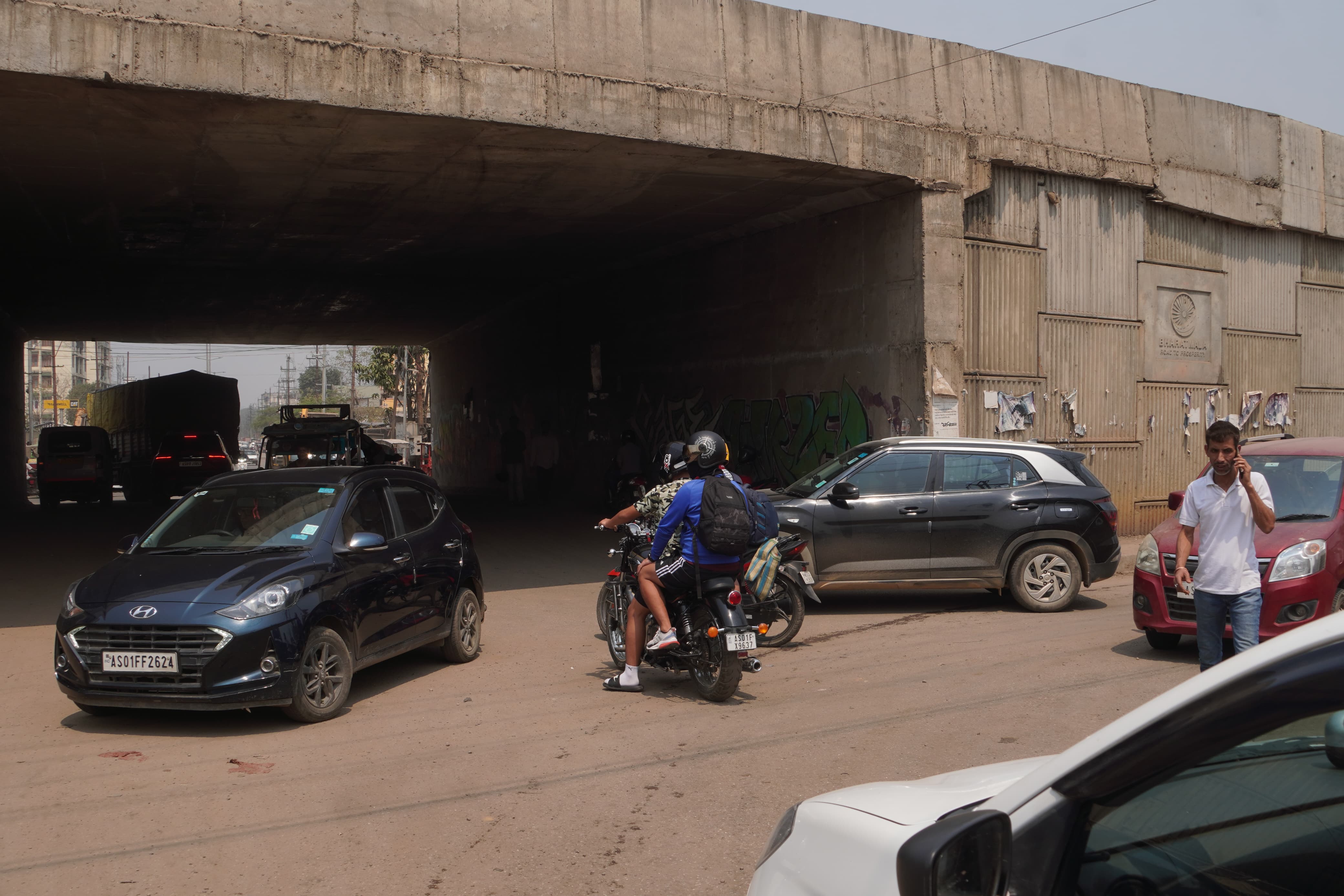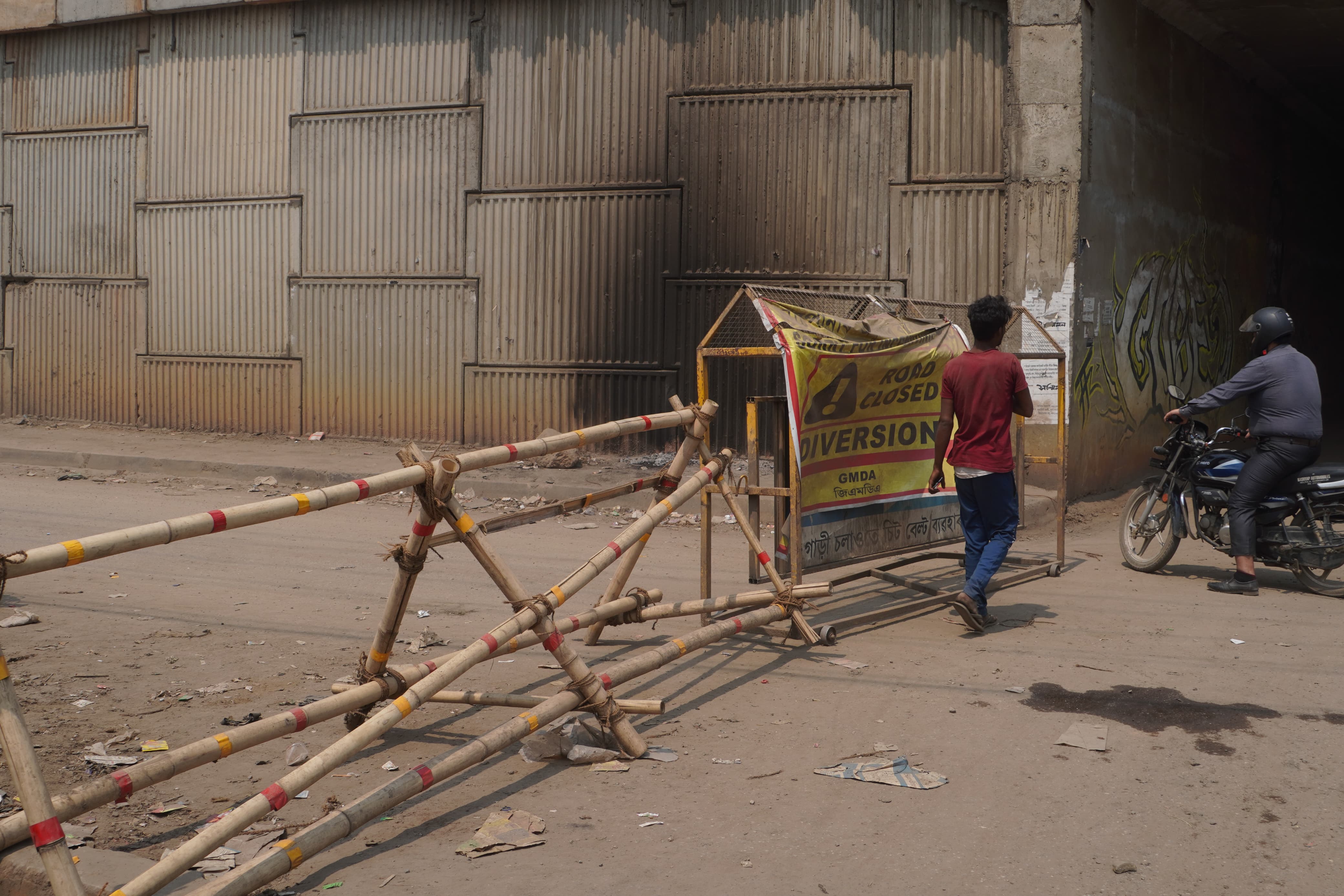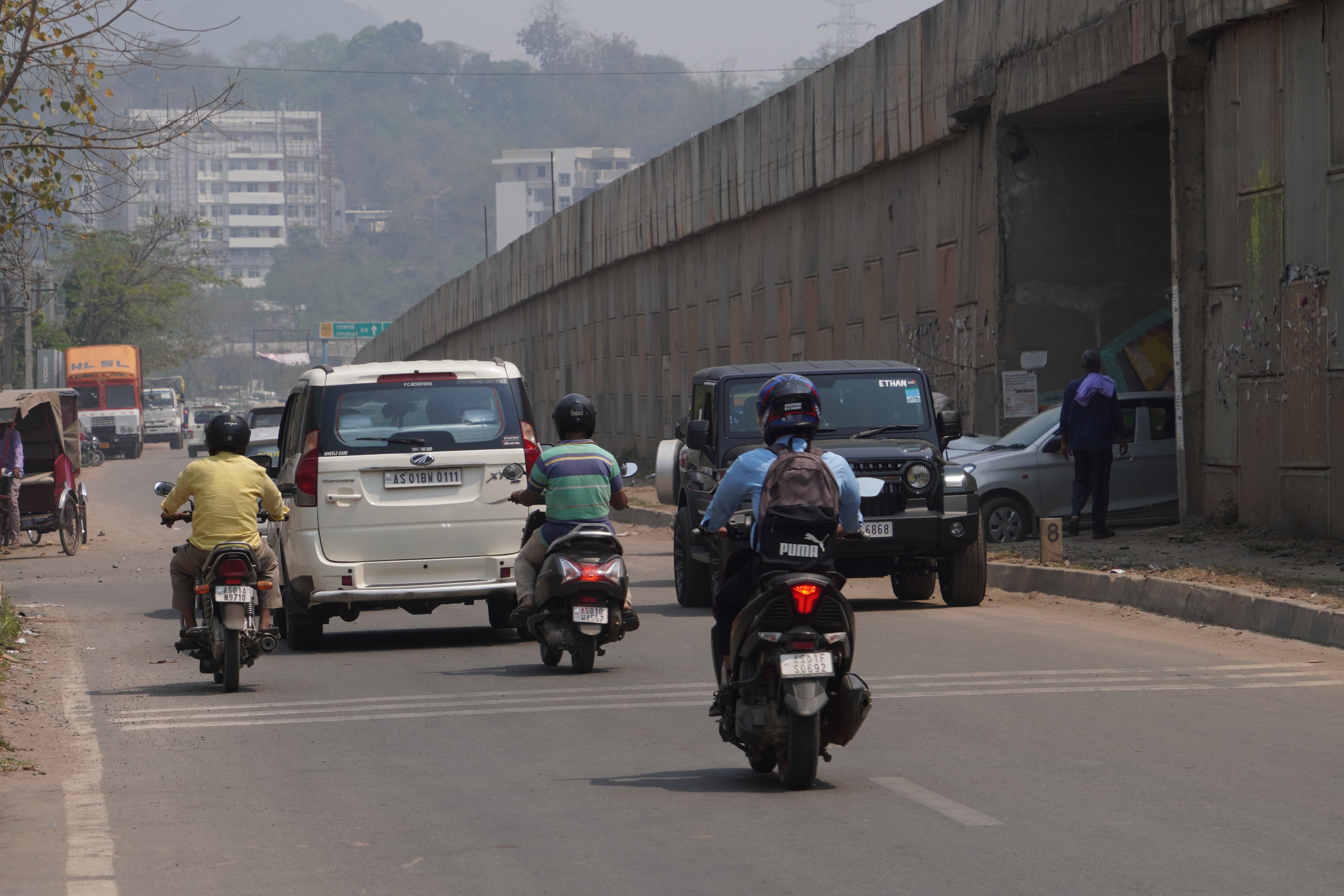The lack of clear directions and proper traffic regulation has also contributed to a rise in accidents
Guwahati’s Balughat area has become a hotbed of confusion and accidents as ongoing drainage construction under the Guwahati Metropolitan Development Authority (GMDA) creates unregulated chaos. Motorists struggle with service lane access near the Basistha flyover, with little to no official intervention.
ALSO READ: Lax Traffic Checking In Guwahati Raises Concerns Over Public Safety
For daily commuters in Guwahati, navigating the service lanes near the Basistha flyover has turned into an ordeal. The ongoing construction of drainage in the Balughat area has left the lanes in complete disarray, with no clear signage or directions in place. As a result, motorists often find themselves on the wrong side of the road, unsure of which way to proceed.
“The entire stretch is an accident waiting to happen. People are blindly following what others are doing because there are no proper signages. If someone takes the wrong lane, others follow,” said a resident of Basistha Chariali, who commutes daily through the stretch.

The confusion is further compounded by the fact that most service lanes along the NH-27 flyovers in Guwahati are designed for one-way traffic. However, the service lane near the Basistha flyover is currently being used as a two-way lane, creating misunderstandings among motorists. Many, unaware of the change, end up driving against the flow of traffic, leading to frequent near-misses.
“People are used to one-way service lanes across the city. Nobody expects vehicles to come from the opposite direction here. If there was a proper sign, half of these issues would not arise,” said another commuter.
Adding to the chaos is the complete lack of traffic officials in the area. With no personnel deployed to direct vehicles, motorists are left to their own devices, often making split-second decisions that lead to dangerous outcomes.
A senior traffic official, speaking to GPlus, acknowledged the issue but pointed out the limitations in manpower. “The service lanes can be used in two ways provided there is a necessity,” the official stated, adding that it is impractical to deploy officials across the entire 23-kilometre (approx) stretch of NH-27 service lanes.

However, commuters argue that at least temporary measures should be put in place to manage the traffic flow until the construction is completed. “If they cannot deploy traffic officials permanently, at least some temporary personnel should be stationed here during peak hours. Right now, it’s a free-for-all,” an office-goer from Khanapara remarked.
With no monitoring in place, the confusion persists, leading to frequent traffic snarls and heated arguments among motorists. “Every day, there are people honking, shouting, and arguing on the road. It’s frustrating because none of this would happen if proper traffic management was in place,” said a shopkeeper near Balughat.
The lack of clear directions and proper traffic regulation has also contributed to a rise in accidents. Several mishaps have been reported over the past few months, many of them involving e-rickshaws, which have become an increasingly common sight in the city.
“E-rickshaws are another major problem. They move at their own pace, stop anywhere they want, and worsen the already chaotic situation. Many accidents happen because drivers don’t expect an e-rickshaw to suddenly stop in the middle of the road,” said a commercial driver who regularly uses the route.
Another resident highlighted the dangers faced by pedestrians. “People walking along the service lanes have no protection. With vehicles coming from both sides, it’s risky to even cross the road,” he said.
The absence of proper barricading around the construction site has also raised safety concerns. According to sources, the drainage work in Balughat is being carried out under GMDA’s supervision. However, authorities have failed to put in place essential safety measures such as adequate barricades and warning signs.

“They should at least put up strong barricades and reflective signage. Right now, all they have are some half-broken wooden planks and a few random markers. At night, it’s even more dangerous,” a local shopkeeper stated.
Residents and regular commuters argue that the situation could have been handled better if the authorities had planned the construction work properly. “It’s like they just started digging one day without thinking of the consequences. How can they expect people to know where to go if they don’t provide any information?” questioned an irate motorist.
Another commuter suggested that authorities should have conducted an awareness campaign before making the service lane two-way. “They should have informed the public through notices, announcements, or at least a public awareness drive. Instead, they just let everyone figure it out on their own, leading to this daily chaos,” he said.
The situation in Balughat is being compared to similar roadwork mismanagement seen in other parts of Guwahati. Many recall how previous construction projects along NH-27 and other major roads were carried out with minimal consideration for public convenience.
“This is not the first time we are seeing such negligence. The same happened during the flyover constructions. Authorities never think about how it will affect people until it becomes a full-blown problem,” a retired government employee noted.
With no immediate solutions in sight, concerns are growing that the chaos in Balughat could escalate into a larger crisis. “All the lanes will eventually turn into accident-prone areas if authorities do not take proper action. We are already seeing accidents happening every week,” said a resident of Lokhra.
Many are now urging GMDA, the city’s traffic department, and PWD to step in and take corrective measures before the situation worsens. “It’s not just about Balughat. If they don’t start managing these service lanes properly now, every construction zone in Guwahati will turn into a death trap,” an urban planner stated.
For now, however, commuters in Balughat are left to navigate the chaos on their own, hoping that the authorities will step up before another accident claims a life. As the construction drags on, the fate of the public remains uncertain—left at the mercy of mismanagement and apathy.



